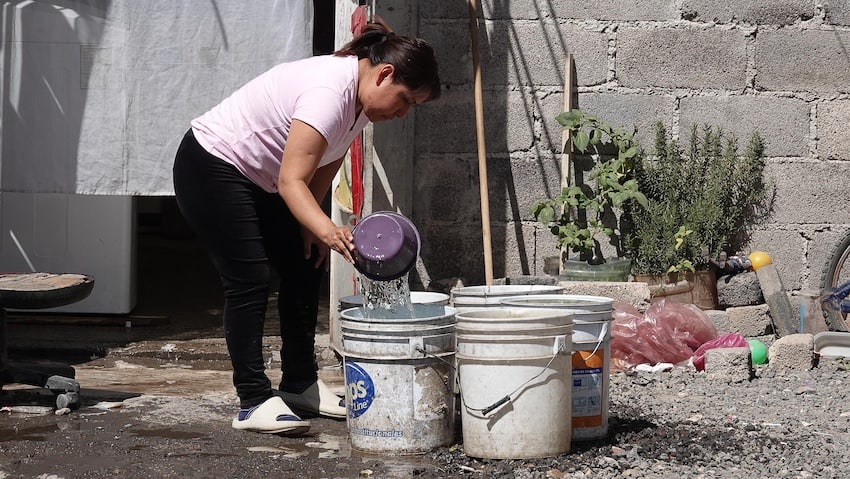It’s been a rainy start to the week for the arid states of Sonora and Chihuahua, in Mexico’s drought-stricken northern region.
According to the National Meteorological Service (SMN)’s weather forecast, heavy rains are expected on Tuesday due to a polar trough over Baja California. The current will cause isolated showers and rain extending from Baja California and Baja California Sur, to Jalisco and Michoacán, before finally reaching Quintana Roo.
Se pronostican #Lluvias fuertes para este martes en #Chihuahua y #Sonora.
Más información en:https://t.co/VfGqEEQjCg pic.twitter.com/gEGRXhZ6Zu
— Conagua (@conagua_mx) February 27, 2024
A dry line in the northeast and a high-pressure system over the Gulf of Mexico will cause gusts of wind ranging between 50 to 70 km/h in Coahuila, Nuevo León, Tamaulipas, and northern Veracruz.
Meanwhile, early signs of summer seem to have arrived in the center of the country, as temperatures inch towards 30 degrees Celsius (95 degrees Fahrenheit). Earlier this month, the SMN warned that Mexico’s first heat wave could arrive as early as March.
Temperatures ranging between 35 to 40 degrees Celsius (95 to 104 degrees Fahrenheit) are expected this week for the states of Campeche, Chiapas, Coahuila, Colima, Guerrero, Jalisco, Michoacán, Morelos, Nayarit, Nuevo León, Oaxaca, southwest Puebla, San Luis Potosí, Sinaloa, Tamaulipas and Veracruz.
Central and southern Mexico can expect temperatures between 30 to 35 degrees Celsius in the states of Guanajuato, Hidalgo, Querétaro, Quintana Roo, Tabasco, Yucatán and México.
Health authorities have advised residents to take necessary precautions to protect themselves from the sun’s harmful rays, such as staying well-hydrated, dressing in light-colored clothing and avoiding prolonged sun exposure. They’ve also urged people to pay particular attention to children, older adults and those with chronic illnesses.

Drought continues across the country
According to the most recent national drought monitoring report, as of Feb. 15, certain regions of the northwest, northern highlands, northeast and west had experienced above-average rainfall. The precipitation helped reduce the severity of drought and abnormally dry conditions in Durango, Sonora, Zacatecas, San Luis Potosí, Jalisco and Colima; however, in Chihuahua 100% of the state’s municipalities reported some degree of drought, and in Sonora 98.6% reported some degree of drought.
Overall, the percentage of areas nationwide experiencing moderate to severe drought has decreased slightly — from 60.45% on Jan. 31 to 59.86% on Feb 15. However, due to warm weather and a lack of rainfall, certain areas in Coahuila, Nuevo León, Chiapas and Tabasco experienced an increase in drought conditions over the last two weeks.
In contrast, there are currently no drought conditions in the Baja California peninsula, whereas the Yucatan peninsula is reporting that only 17% of the state is impacted by drought.
Mexico News Daily
